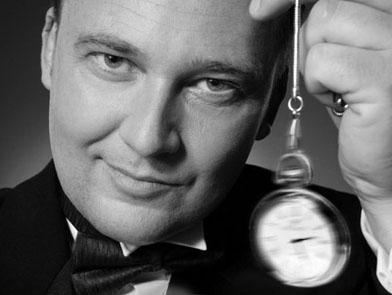
Don't Get Brainwashed!
I bet you've all heard an old joke where a man returns from a business trip one day earlier than planned and catches his wife with another man. She denies that anything is going on between her and that man trusts her, even though the obvious evidence points otherwise.
As her final argument, the woman asks: who are you going to trust, me or your lying eyes?
You might wonder what this old joke has to do with chess. Well, recently I was teaching beginners in a local school. Two of them discussed an opening position from their game. It looked something like this:
In this position one of them suggested a very reasonable move 2...Nc6. His friend cringed and said: "No, it is a bad move! Your oponnent will play 3.Qxc6 and when you recapture the queen, you'll end up with doubled pawns!"
I kid you not, this is the real story! I immediately asked if the second boy was aware of the relative value of the pieces and he answered yes, he knows that the queen is worth about nine pawns and the knight is only three pawns.
"Then why do you want voluntarily give up six pawns by trading a queen for a knight?" I asked, barely able to contain my amazement.
"Well, if you get doubled pawns, then your game is ruined, therefore it is a worthy sacrifice," replied the kid.
So this poor 7 year-old chess player was already brainwashed and didn't trust his own eyes which saw an extra queen!
We already discussed the popular misconception about doubled pawns here. I have to admit that the myth about the negative effect of doubled pawns is by far the most popular. Even people who can barely tell the Ruy Lopez from the Queen's Gambit heard somewhere that doubled pawns are evil. And this is one of many misleading chess statements.
Today, we'll talk about another popular chess rule: "A knight on the rim is grim."
They say that the author of this catchy rhyme is Dr. Siegbert Tarrasch. I can easily see why this famous grandmaster, who was called "the teacher of all German chessplayers," coined this phrase. It is easy to remember, and unlike the myth about doubled pawns, it is indeed true in the majority of the cases.
The simple math here: a knight in the center controls as many as eight squares and the same knight in the corner controls just two squares. Therefore, a knight in the center is four times stronger than a knight in the corner of the board!

But like any rule it has many exceptions. Let's start with a recent masterpiece by the world champion.
Why did Magnus play an ugly looking 7.Nh3? There the knight doesn't block the f-file (compared to 7.Nf3) and also can jump to f4 to help White's attack. Later Magnus moved his second knight to the rim: 11.Nd1!
The explanation is again very simple: he was preparing c2-c3 kicking Black's best piece -- Nd4. So, you can see that the ugly-looking knight moves had a solid positional foundation!
These days it is not uncommon to see top players develop both of their knights to the edge of the board!
Sometimes both opponents put their knights on the rim of the board as if they wanted to outdo each other!
Just imagine the shock of a beginner who would analyze this game of two super GMs! But you ain't seen nothing yet! In the following game played in the Russian Super Championship, White surprised his opponent (the former FIDE world champion!) as early as move 2!
So what's going on there? Was Tarrasch completely wrong when he proclaimed his famous rule about a knight on a rim? Unfortunately, yes, Tarrasch's positional school is completely outdated since chess is totally different today.
Just kidding!
A knight on the edge of the board is indeed misplaced in the majority of the cases. I haven't done any statistical research, but I'd guess that the ratio of the Nf3 and Nc3 to Nh3 and Na3 in all the games of any big database should be at least 10 to 1!
But it doesn't mean that you should blindly dismiss any move with your knight to the rim on this ground. If you see that such an "ugly" knight would meet the requirements of the position, by all means challenge Tarrasch's rule and play that move!
If all the chess moves were played strictly according to the positional rules, then the game of chess would be really boring!
RELATED STUDY MATERIAL
- Check out GM Serper's last article: How to Spot the Invisible Pin.
- Watch GM Gregory Kaidanov's video on Magnus Carlsen.
- Play like Carlsen in the Chess Mentor.
- Practice moving your knights in the Tactics Trainer.
- Looking for articles with deeper analysis? Try our magazine: The Master's Bulletin.






